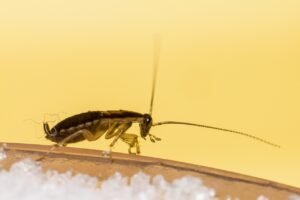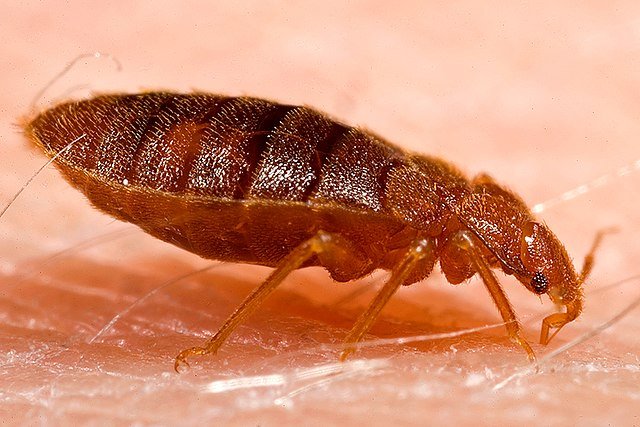Cockroach Prevention Before Summer Heat: Why You Shouldn’t Wait Until July for Pest Control
 .
.
If the heat hits in early April, it’s rare—but manageable. If it hits in late May, like it did in 2025, the situation changes drastically.
People tend to follow similar habits. They wait until the weather is hot and dry—no more rain—before they call an exterminator. But in 2025, Greece experienced unusually high temperatures at the very end of May, along with unstable weather and sudden warm spells. By the time calls started coming in, cockroach populations had already exploded. When we arrived at apartment buildings to spray the sewer pits, they were literally overflowing with roaches.
And when the sewer pit (inspection chamber) is full of cockroaches, that means the main vertical sewer pipes are also infested. By that point, it’s too late for preventive action—the infestation has already spread.
Technical Note:
Sewer pits are the main access points to a building’s drainage system. That’s where all vertical waste lines from apartments connect to the main municipal sewer. When cockroaches—especially Periplaneta americana—gather there in large numbers, it means three things: high humidity, warm temperatures, and organic matter. The perfect breeding ground. And from there, climbing up into homes is just a short trip.
Cockroaches normally start reproducing in spring. If May passes without any pest control, you’re already heading into summer with established, hidden colonies. What could have been handled with a single preventive spray now requires repeated treatments—or more aggressive tactics.
Biological Note:
The cockroach life cycle is temperature-dependent. The warmer it is, the faster they reproduce. At 28–32°C (82–90°F), one full cycle from egg to adult can take as little as 45–50 days. A single adult female can produce hundreds of offspring in a season. Every week you delay gives the colony a huge head start.
One thing many people don’t realize: Cockroaches don’t care about rain—they only care about temperature. Once nighttime temperatures stay above 15°C (59°F), that’s more than enough for them to get active. They don’t need 35°C days. Mild spring nights are just fine.
So we started doing building-wide applications around May 15th. But that’s only half the battle. Most residents never treat their actual apartments. They ignore their bathrooms, balconies, and kitchens. So the technician only sprays the outside sewer pits. The central vertical pipes are left full of cockroaches. And the ones already inside the vertical lines just wait—for you to leave or go to sleep.
There’s no way to treat those interior pipes directly. So when the roaches can’t retreat downward (because of the pesticide), the only escape route is up—right into your toilet or bathroom drain.
Technical Insight:
The pipe going up from the sewer pit is called a vertical drainage stack. It’s usually a 100mm PVC or concrete pipe, running up through the building to the roof. There’s no direct access to spray inside. If you don’t have a backflow valve or functioning water traps (siphons), cockroaches climb freely through the pipe and appear in your bathroom without warning.
Backflow Valves and Siphons:
A check valve prevents reverse flow in the drain line, including from insects.
Siphons or water traps act as physical barriers. If they dry out—like in unused bathrooms or storerooms—they lose their protective seal.
By July, the problem had grown out of control. Phones were ringing nonstop during the first heatwaves. But what can you do last minute? And how many buildings can one team treat per day? Pest control is preventive—not reactive. If you’re seeing cockroaches everywhere, you’re already late.
Field Note:
Professional pest control uses residual insecticides that work best before the population explodes. Once roaches nest inside the walls, behind toilets, or inside pipes, you may need repeated visits, gel baits, or even opening up drywall and furniture. It becomes a slow, multi-step process.
In 2025, we also had many reports of flying cockroaches in the streets. Big ones. Periplaneta americana again. They were coming out of sewer grates, climbing trees or walls, and gliding from building to building. At night, people thought they were bats. If you’re unlucky, they might land on your living room table.
Flight Behavior:
The American cockroach doesn’t truly "fly" like a bird or wasp—it glides or flutters, especially from high points. In warm, humid weather, they can cover 2–4 meters indoors or up to 100 meters outdoors. If you live near a park, a neglected building, or have roof drains, it’s a real risk.
Some people told me:
"But you did pest control, and I’m still seeing roaches!"
I asked:
"Where are you seeing them?"
They replied:
"On the walls and balconies, climbing up."
So clearly—they came from outside, not up through the pipes. And even if they did come from the drainage stack, most residents refused indoor spraying, not even in the bathroom drains.
Another common myth I have to bust:
“I keep my home clean—why would roaches come here?”
Clean or dirty doesn’t matter. If the building didn’t do proper prevention, or if the cockroach came from outside, it’s not your fault. Roaches don’t scout for trash cans. They just need one millimeter of access, and they’re in.
Real-Life Examples:
In our work, we’ve seen roaches enter homes through:
Window gaps
AC pipe holes in walls
Overflow holes in aluminum doors
Cracks in balcony drains
Dirt makes it easier for them to stay and multiply. But it’s not a requirement to enter. Roaches are equal opportunity invaders. They’ll enter palaces if given a chance.
Thankfully, many clients did call early. These proactive homeowners avoided major infestations by acting just in time.
The Bottom Line:
The best time for cockroach control is not July. It’s anytime after night temperatures stay above 15°C (59°F). Don’t wait for 40°C days or flying cockroaches in your living room.
Nasos Iliopoulos,
MSc Agronomist & Certified Pest Control Expert
Scientific Director, Advance Services (Athens, Greece)
Licensed Pest Control Business – Ministry of Rural Development & Food (GR)
Disclaimer
This article is for informational purposes only. Pest control laws and approved chemicals vary by country. For best results and legal safety, we strongly recommend contacting a licensed pest control professional in your local area. Always make sure that the pest control technician is properly certified or licensed, depending on your country’s regulations. It’s important to confirm that they only use approved products and apply them exactly as instructed on the product label. In most places in Europe, UK, or USA, following label directions is not just best practice—it’s the law.

